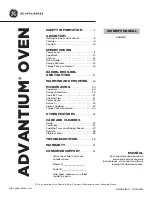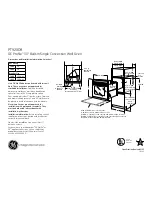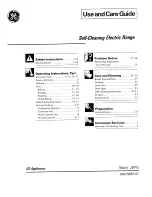
14
Subject to rigorous control in our cooking study
This section includes a selection of dishes and their
corresponding settings. The types of heating and appropriate
temperatures are indicated for the respective dishes. There is
also information on accessories and the ideal insertion level.
What's more there are tips on cookware and preparation
methods.
Notes
■
The table's values are valid for preparing food in a cold,
empty oven.
Only preheat when indicated in the tables. Before using the
oven, remove all accessories from it which are not necessary.
Cover the accessories with baking paper after preheating the
oven.
■
The times given in the tables are as a guideline only. They are
determined by the quality and composition of the food used.
■
Use the accessory supplied. Additional accessories can be
purchased from specialist retailers or the Technical
Assistance Service.
Before using them, remove accessories and cookware that
are not necessary from the cooking compartment.
■
Always use an appropriate dishcloth to remove hot
accessories or cookware from the cooking compartment.
Cakes and pastries
Bake on one level
To bake a cake it is best to place it on one level with top and
bottom heat
%
.
If baking with hot air
:
, the following levels are recommended
for inserting the accessories:
■
Cakes in moulds: level 2
■
Cakes on a tray: level 3
Baking at different levels
Use the hot air function
:
.
Baking on two levels:
■
Universal tray
■
Oven tray
The trays put in the oven at the same time do not need to be
ready at the same time.
The tables include numerous tips for the dishes.
If you use 3 rectangular moulds at the same time, place them
on the shelf as shown in the image.
Baking tins
It is best to use dark-coloured metal baking tins.
Baking times are increased when light-coloured baking tins
made of thin metal or glass dishes are used, and cakes do not
brown so evenly.
If you wish to use silicone baking tins, use the information and
recipes provided by the manufacturer as a guide. Silicone
baking tins are often smaller than normal tins. The amount of
mixture and recipe instructions may differ.
Tables
The table shows the optimum types of heating for each type of
cake or pudding. The temperature and cooking time will
depend on the amount and the consistency of the cake batter.
For this reason the cooking tables will always provide
approximate cooking times. Always start with the lowest. The
items will be more evenly browned at a lower temperature. If
necessary, you can increase the temperature next time.
If you preheat the oven, cooking times will be reduced by 5 or
10 minutes.
Additional information is provided in Suggestions for baking as
an annex to the tables.
To bake a single cake on one level, place the tin on the
universal tray.
If you are baking several cakes at the same time, you can place
the moulds together on the shelf.
Cakes in moulds
Cookware
Level
Type of heating Temperature
in °C
Cooking time,
minutes
Flat cake
Corrugated tart baking tin,
Ø 31 cm.
1
%
240-260
30-40
2 corrugated tart baking tins,
Ø 31 cm.
3+1
:
180-200
40-50
Quiche
Corrugated tart baking tin,
Ø 31 cm.
1
%
220-230
40-50
Baking
Corrugated tart baking tin,
Ø 28 cm.
1
%
190-200
40-50
Food
Accessories
Level
Type of heating
Temperature
in °C
Cooking time,
minutes
Pizza
Universal tray
2
%
200-220
25-35
Universal tray and oven
tray
2+4
:
180-190
30-35
Tarte flambée (preheat)
Universal tray
2
%
270
15-20
Plaited loaf
Universal tray
2
%
170-190
25-35
Содержание HB64AA Series
Страница 1: ......
Страница 2: ......
Страница 3: ......
Страница 4: ......
Страница 5: ......
Страница 6: ......
Страница 7: ......
Страница 8: ......
Страница 9: ......
Страница 10: ......
Страница 11: ......
Страница 12: ......
Страница 13: ......
Страница 14: ......
Страница 15: ......
Страница 16: ......
Страница 17: ......
Страница 18: ......
Страница 19: ......
Страница 20: ......
Страница 21: ......
Страница 22: ......
Страница 23: ......
Страница 24: ......










































